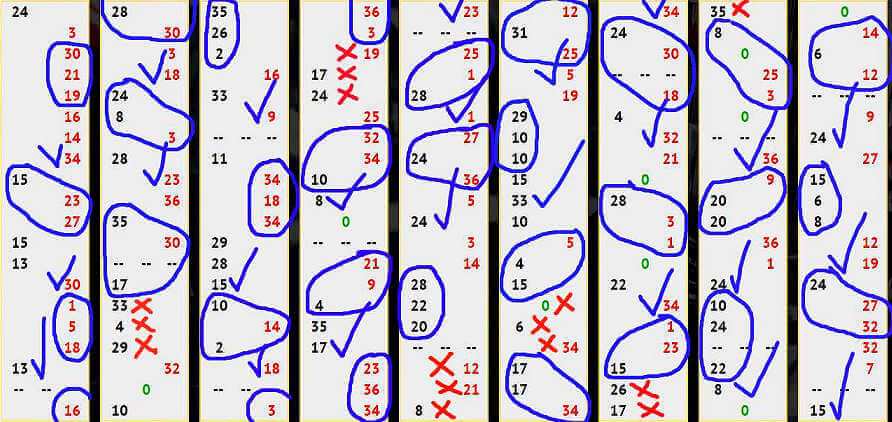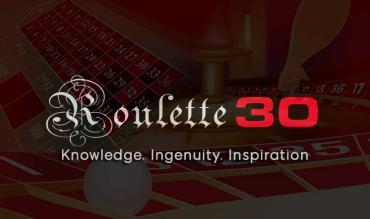Palestis Single Dozen system is invented by HarryJ and Palestis, both very experienced roulette players. It is a very sensible strategy, that incorporates all the experience and know how of a player with thousands of hours on the live roulette tables and has been rigorously tested both by himself and – subsequently – by other members of our forum, with great results. The concept behind the system is the law of the third.
Characteristics
- Betting on a single Dozen or Column
- Waiting for a trigger
- Relatively low bankroll
- Easy to understand and apply
- Thoroughly tested
In short, it is an easy, effective, low bankroll system on the very popular roulette bets of dozens and columns.
The fact that this system combines all the above features, makes it a worthy addition to our roulette systems hall of fame and give it even more exposure than the 40K views, that Palestis’ topic has received as of January 2018.
Trigger
Before you start betting, the following condition (trigger) should have occurred. In the last 3 spins only 2 dozens should have appeared. This means that we are looking for a sequence like:
XXY or XYX or YXX where X and Y are specific dozens.
Then we bet the Y dozen that has appeared one time in the last 3 spins.
Examples:
- After 22,17,35 we bet the 3rd dozen
- After 4,11,13 we bet the 2nd dozen
- After 25,3,31 we bet the 1st dozen

You should always take into account the exception (no bet) rules.
Exceptions and Red Flags:
- If the same dozen – any dozen – appears repeatedly, 3 or more times, immediately preceding the trigger. (it’s a sign of anomaly that can affect the rest of the dozens).
- If the first 2 bets after the trigger result in XX (same dozen as the majority dozen in the trigger) you stop and only lose 2 bets. Easily recoverable in the next trigger.
- If there is more than one 0 in the numbers preceding the trigger (0’s tend to come in packs).
Palestis notes specifically:
I have seen some very rare 3 back to back losses during the long tests that I have done. However, going back on my notes to pinpoint possible reasons for that, I saw that almost always it involved a situation where there was an anomaly in the numbers preceding the trigger.
If one dozen has appeared consecutively, like 2,7,1,11, 10,32, though the obvious trigger is 11,10,32, I would let that trigger go without betting. Instead wait for a more normal sequence involving a normal mix of dozens. Also if I see a sequence like 2,7,1,11,10, 32,36, 8 I would definitely void the 32,36,8 trigger, because the target dozen (1st dozen), has already appeared 5 times just before the trigger was formed. Therefore chasing a dozen that has already appeared enough times can be risky. Let that go and wait till things return to normal.
Wagering Plan
Palesis main focus is the bet selection. Especially the fact that according to his tests, it is very rare to have 3 or 4 back to back lost attacks, that is 3×4=12 lost bets. If this is true, then indeed this is a great advantage (since common single dozen bet can lose more than 20 consecutive bets) and the betting plan doesn’t matter that much.
Anyway, his suggestion for a progression is something like this:
- 1-1-1,5
- 2-2-3
- 4-4-6
- 8-8-12
- etc.
Whenever we lose an attack we move to the next level. When we win an attack we stay at the same level. When we are in profit, we end the attack and start over. Alternatively, Terminator suggest that: “However many units we are away from a tie with our previous high, we divide by 2 and start at the level that begins with that amount”.
Two other betting schemes, that were proposed by Bayes and tested by Terminator, showed great results. They are based on the famous Holloway progression:
1,1,1,1,1,2,2,2,2,3,3,3,4,4,5,5,6,7,8,9,10,11,12,14,16,18,20,22,25,28,30,32,35,40,45,50,55,60,70,80,90,100,110,120,135,150
Divided in clusters of 3 bets we get:
- 1,1,1
- 1,1,2
- 2,2,2
- 3,3,3
- 4,4,5
- 5,6,7
- 8,9,10
- 11,12,14
- 16,18,20
- 22,25,28
- 30,32,35
- 40,45,50
- etc.
In one version of this betting plan, We go up when we lose and stay on the same level after a win.
In the other version, we continue to move up the progression regardless of a prior win or loss.
Jek proposed this progression based on a divider
The idea is that after the first 3 bets the following are determined based on the current balance. With a negative balance between 4 to 9 units the balance is divided by 2. With a negative balance between 10 to 21 units the balance is divided by 3. With a negative balance between 22 to 100 units the balance is divided by 4. With a negative balance over 100 units the balance is divided by 5. If the result of the division is not a whole number, then this number is always rounded up. The resulting progression goes something like this:
1 1 2 2 3 5 5 7 7 9 11 14 17 21 21 25 30 36 43 50
This is my own proposal for a dozen progression:
1 1 1 1 1
2 2 2 2 2
3 3 3 3
4 4 4
5 5 5
6 6 6
7 7 7
8 8 8
9 9 9
10 10 10
Reset on a new high, go back 2 steps on a win.
Further rules to make it even safer:
If you reached level 5 or above you end the progression not on a new high, but when you minimize your loss equal to the max step you reached. For example if you reached the 6 6 6 step, you end the progression with 6 units loss. You add the losses to the next attack, which starts at level 2.
Naturally, in all progressions, when we are in profit, we end the attack and start over.
The quest continues
Keep in mind that this very simple yet effective roulette strategy, works both for dozens and columns and you can use it on both simultaneously if you so prefer.


